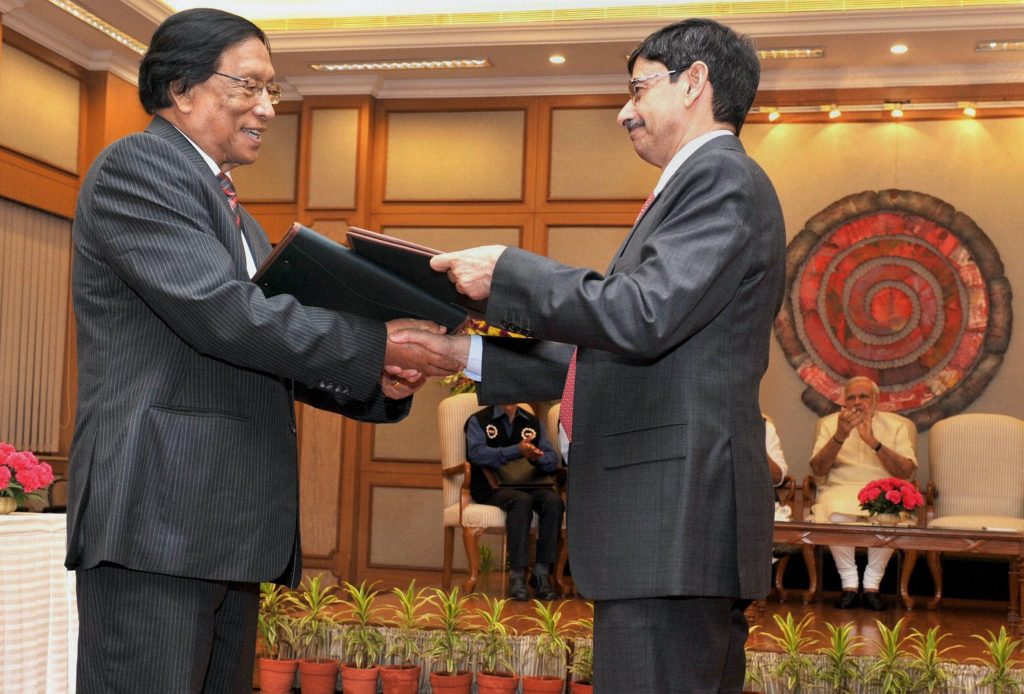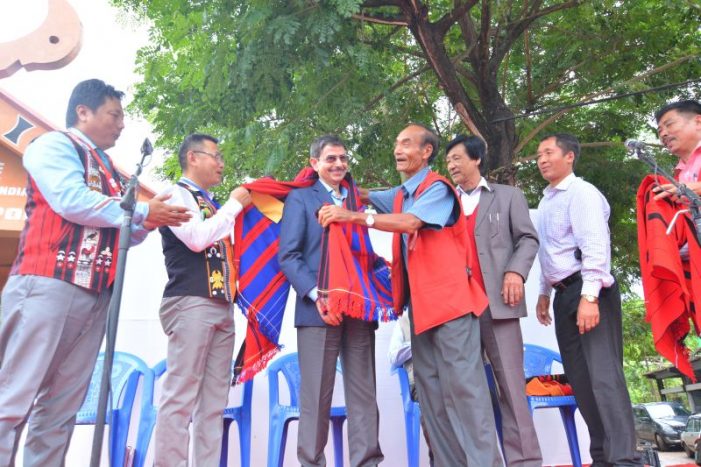The role of RN Ravi, who was also an architect of the Bodo Accord in Assam, in the next few months, will be critical to understand what the government has in mind
By Sanjib Kr Baruah
Source: Moneycontrol.com
Nagaland will get a new Governor on Thursday when RN Ravi, the fourth interlocutor on the ongoing Naga peace talks and present deputy national security adviser, will assume the new gubernatorial responsibility as the Centre’s chief agent at Raj Bhavan in Kohima. From interlocutor to Governor is an extraordinary move. But it has also left the Nagas confounded.
“It is a confusing signal. It has come at such a sensitive time. We will have to wait and see what it signifies but we would like to really think is that perhaps the negotiations are complete and RN Ravi has been appointed to finalise the formality,” said Keviletuo Kiewhuo, a former chief of the Naga Hoho, an apex tribal council considered to be an influential decision-making platform of the Nagas. But that may turn out to be wishful thinking too.
After Spain’s Basque insurgency, the Naga underground movement is the world’s second longest-running armed insurgency. While the first stirrings of Naga nationalism is not less than 100 years old, its violent avatar reared its head more than 60 years back.

Prime Minister Narendra Modi witnessing the exchange of the peace accord text by the Government of India interlocutor RN Ravi and NSCN(I-M) leader Th. Muivah in New Delhi on August 3, 2015. Credit: PTI Photo
While peace talks with the NSCN (IM faction) has been going on for the last 22 years—in New Delhi as well as in exotic locations in Paris, Geneva, Zurich, Amsterdam, Chiang Mai (Thailand), London, Osaka, Malaysia, and The Hague in the past—finality in the peace with the Naga Underground has been elusive thus far.
A significant event took place in 2015, when the Central government—represented by interlocutor Ravi—signed a framework agreement amid much fanfare before TV cameras with the PM and the Union home minister in attendance.
Kiewhuo’s optimism notwithstanding, it has to be remembered that very few officials in Delhi understand the Northeast region with all its layered intricacies and nuanced details as much like Ravi. In effect, the apparent fault-lines and fissures amongst Nagas would only be too obvious for Ravi—something the government can use as an effective bargaining chip.
The distinct and growing demands of the eastern Nagas, for instance. Ravi would also certainly be aware of the implications of a resolution of the Naga issue on neighbouring states especially Manipur if a Greater Nagalim is created.
Or the fact that the Naga movement is not what it was once upon a time. That it is not just the NSCN (IM) but five other factions too and last but not the least the wide-open split between Nagas of Myanmar and Nagas from the Indian side. Of course, the establishment has been proactive to enlist the Myanmar military’s support in order to dissipate the Naga movement which is often termed as the ‘mother’ of the armed insurgencies in the Northeast.
This is in the backdrop of smartly changing tactics to counter insurgency in the Northeast. The key change has been the focus on diplomatic subjugation of the militant movements as opposed to military subjudication. And it is not being waged on the battlefield but on the negotiating table.

Interlocutor to the Indo-Naga peace, RN Ravi felicitated by Naga civil societies outside Dimapur Airport at a public reception on October 23, 2017. (Morung Photo)
Traditionally, northeastern militants based their claim for secession or greater autonomy on two specificities—their unique ethnicity and their ancestral homeland. In other words, a contiguous piece of territory that was in the exclusive control of the ethnic community since the distant past. The government countered this by the arguments of unity in diversity or unity and integrity.
Of late, such attempts to displace the demand for ethnic homelands have been abandoned in favour of a new policy. Not to reject the claim of ethnic homelands but to accept the fundamental premise of the demand and used it to weaken the movement.
Says Prof Kumar Sanjay Singh, a keen watcher of developments in the Northeast: “Now the policy thrust is not to reject the claim of ethnic uniqueness of the insurgents. On the contrary the policy thrust is to create rival claims of unique ethnicity and homeland to divide the insurgent groups.”
“Competing claims for homeland by ethnic communities that are virtually like clones or mirror images of each other is being encouraged. To dilute the claim of territorially contiguous ethnic homelands that was being made by the larger insurgencies”, says the Delhi University history professor.
The role of Ravi, who was also an architect of the Bodo Accord in Assam, in the next few months, will be critical to understand what the government has in mind.







 The last Konyak headhunters of Nagaland
The last Konyak headhunters of Nagaland Meet R.N. Ravi, who is mediating peace with the Nagas
Meet R.N. Ravi, who is mediating peace with the Nagas The Top Viral YouTube Videos of 2017
The Top Viral YouTube Videos of 2017 An orbiting message of peace
An orbiting message of peace










Leave a Reply
Your email address will not be published. Required fields are marked (required)